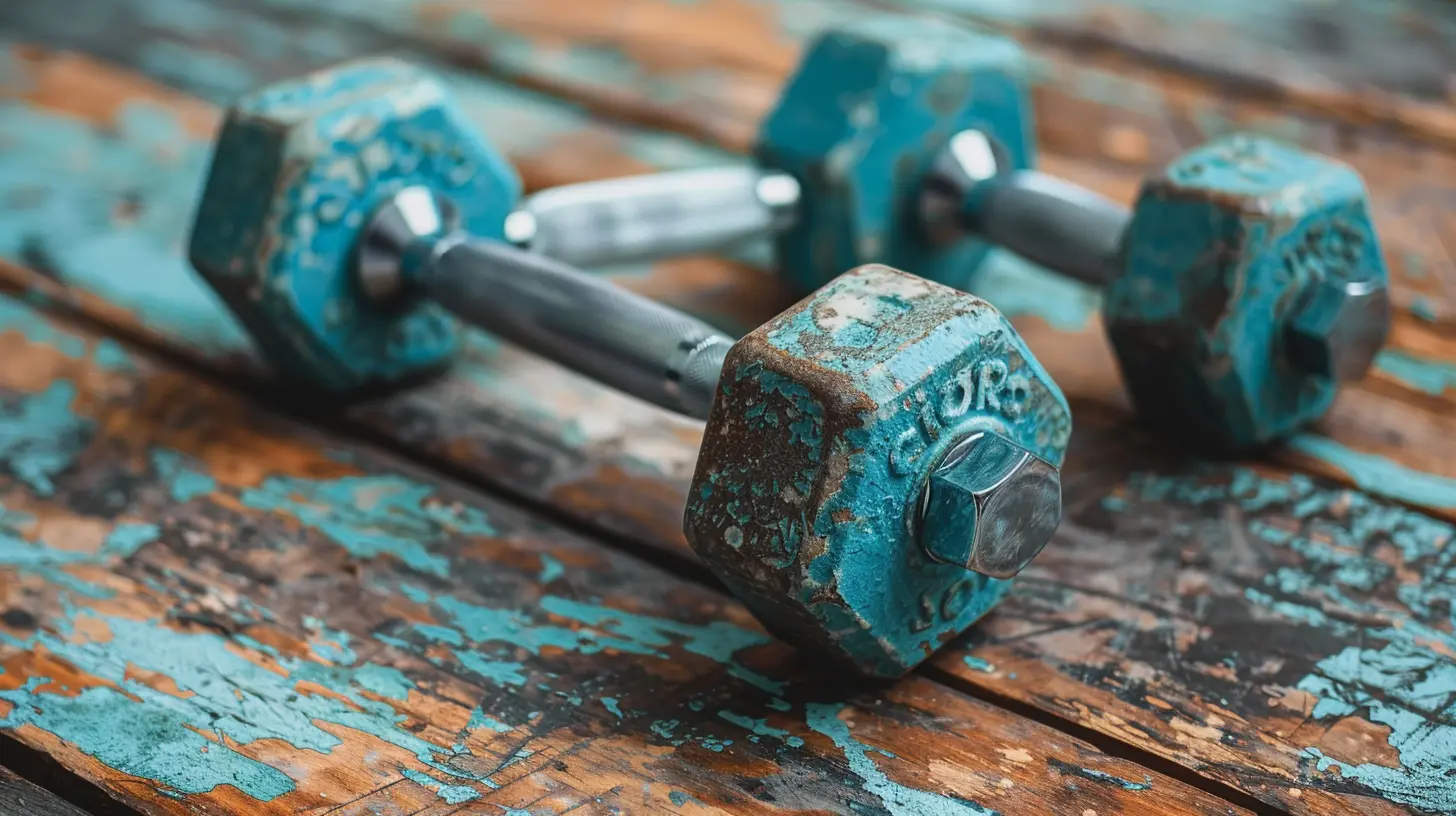How to Balance Strength Training and Cardio Effectively
14 November 2025
Let’s be honest—we’ve all been there, standing in the gym unsure of whether to hit the weights or jump on the treadmill. The eternal fitness tug-of-war between strength training and cardio doesn’t make it easy to decide. You want to build muscle, but you also want to burn fat. Can you do both at the same time without sabotaging your progress?
Absolutely. But it takes a little finesse, some strategy, and a whole lot of listening to your body. Let’s unpack how to balance strength training and cardio effectively so you don’t have to choose one over the other. Spoiler alert: you can have your protein shake and run, too.
Why Do You Need Both Strength Training and Cardio?
Before we break down the "how," let’s talk about the "why." Each form of exercise brings its own set of benefits to your health and fitness goals.Strength Training: More Than Just Muscles
Sure, lifting weights builds muscle, but it does so much more. It boosts your metabolism, strengthens your bones, improves posture, and helps your joints stay healthy. The more muscle you have, the more calories you burn at rest—yes, even when you're binge-watching Netflix.Cardio: It’s Not Just for Weight Loss
Cardiovascular exercise isn’t just about shedding pounds. It’s about heart health, stamina, and endurance. Cardio increases your lung capacity, lowers your blood pressure, and helps reduce stress. Plus, it’s a powerhouse when it comes to burning calories during the workout.So when you combine the two? You become an all-around fitness machine.
The Common Mistake: Overdoing One and Ignoring the Other
It’s easy to fall into the trap of doing TOO much of one and not enough of the other.Some people pound the pavement with endless hours of cardio hoping to lose weight quickly, only to end up with lean muscle loss and fatigue. Others hit the weights like bodybuilders but get winded going up a flight of stairs.
It’s all about balance. Think peanut butter and jelly—each is fine alone, but together they create something amazing.
How to Balance Strength Training and Cardio: A Realistic Approach
Now let’s get into the good stuff—how to actually balance the two without burning out, plateauing, or dreading your workouts.1. Identify Your Primary Goal
Your goals should always guide your training focus. Ask yourself:- Are you trying to lose fat?
- Build muscle?
- Improve athletic performance?
- Boost overall health?
If fat loss is your goal, you might lean slightly more on cardio (while still lifting weights). If your main aim is muscle growth or strength, prioritize lifting and sprinkle in some cardio to support heart health and recovery.
Remember: your primary goal gets around 70% of your focus, and the remaining 30% supports it.
2. Schedule Smartly
Think of your training schedule like a recipe—you need the right ingredients in the right amounts.Here's a sample weekly plan if you're working out 5 days a week:
| Day | Workout Focus |
|-----------|--------------------------|
| Monday | Strength (Upper Body) |
| Tuesday | Cardio (HIIT or Steady) |
| Wednesday | Strength (Lower Body) |
| Thursday | Active Recovery or Yoga |
| Friday | Strength (Full Body) |
| Saturday | Cardio (Longer, Moderate)|
| Sunday | Rest |
This gives you three solid strength sessions and two cardio days. It’s balanced, effective, and doable.
3. Mix Up Your Cardio
Cardio doesn't have to mean slogging away on the treadmill while staring at the clock.Try different types:
- High-Intensity Interval Training (HIIT): Great for fat-burning and preserving muscle.
- Steady-State Cardio: Like brisk walking or cycling; easier on joints and great for recovery.
- Circuit Training: Combine strength and cardio for a metabolic blast.
Mixing it up keeps things spicy and prevents overuse injuries or mental burnout.
4. Don’t Do Heavy Lifting and Intense Cardio on the Same Day
It might seem like a good idea to cram everything into one mega workout, but it’s a fast track to exhaustion and poor results. Your body only has so much fuel and energy. Let each modality shine on its own day.If you absolutely need to do both in one day? Do strength first, then cardio. That way, you still lift with full power and intensity.
5. Listen to Your Body
This one can’t be overstated: recovery is just as important as your workouts.If you’re constantly sore, tired, or irritable, your body might be screaming for rest. Overtraining can actually reverse your progress, leading to muscle loss, hormonal imbalances, and nagging injuries.
Sleep well, eat enough (especially protein), hydrate like it’s your job, and take rest days seriously.
Special Considerations for Different Fitness Goals
If You’re Trying to Lose Fat
Focus on:- Caloric deficit through diet.
- Strength training to preserve muscle.
- 2-3 cardio sessions per week (a combo of HIIT and moderate-intensity).
Avoid excessive cardio. It can lead to muscle breakdown, especially if you're not eating enough.
If You Want to Build Muscle
Focus on:- 3-5 days of strength training.
- Short, low-intensity cardio (like walking or cycling) 1-2x a week just for health and recovery.
Too much cardio can interfere with muscle growth if it’s cutting into your caloric surplus or recovery time.
If You’re Training for an Event or Sport
Balance is crucial here. Train sport-specific movements, but also incorporate:- Strength training to support performance and injury prevention.
- Cardio in the form that mimics your sport (e.g., distance running, sprint drills).
Fueling for Performance
You wouldn’t drive your car on empty, right? The same goes for your body.When balancing strength and cardio, your nutritional needs increase—especially carbs and protein.
- Protein: Aim for 0.8–1g per pound of body weight to support muscle repair.
- Carbs: These are your energy source. Don’t fear them.
- Fats: Keep them moderate and focus on healthy sources like avocados and nuts.
Proper pre- and post-workout nutrition makes a world of difference in your energy, performance, and recovery.
Recovery Is Where the Magic Happens
This deserves its own section because it’s THAT important.When you train, you’re breaking your body down. When you rest, your body rebuilds to be stronger and faster.
Ways to promote recovery:
- Get 7–9 hours of sleep per night.
- Stretch or foam roll post-workout.
- Mix in active recovery days (light walks, yoga, mobility work).
- Take at least 1–2 full rest days per week.
Don’t see rest as lazy—it’s part of the grind.
Real Talk: Finding Your Personal Balance
Everyone’s body reacts differently to training. What works for one person might totally tire someone else. The only way to find your sweet spot is with experimentation and consistency.- Try tracking your workouts and energy levels.
- Adjust based on how you feel and progress.
- Be patient—results come with time, not overnight.
Think of it like tuning an instrument. At first, you’ll need to adjust often, but eventually, you’ll find your rhythm.
Final Thoughts: The Sweet Spot Between Sweat and Strength
Balancing strength training with cardio isn’t about choosing sides—it’s about building a relationship between the two that supports your goals, your lifestyle, and your happiness. Because at the end of the day, fitness isn’t just about looking good—it’s about feeling good, moving well, and building a body that supports you in every chapter of life.So go ahead—lift heavy, run fast, rest hard, and keep chasing that best version of yourself.
all images in this post were generated using AI tools
Category:
FitnessAuthor:

Jackson Mahoney

